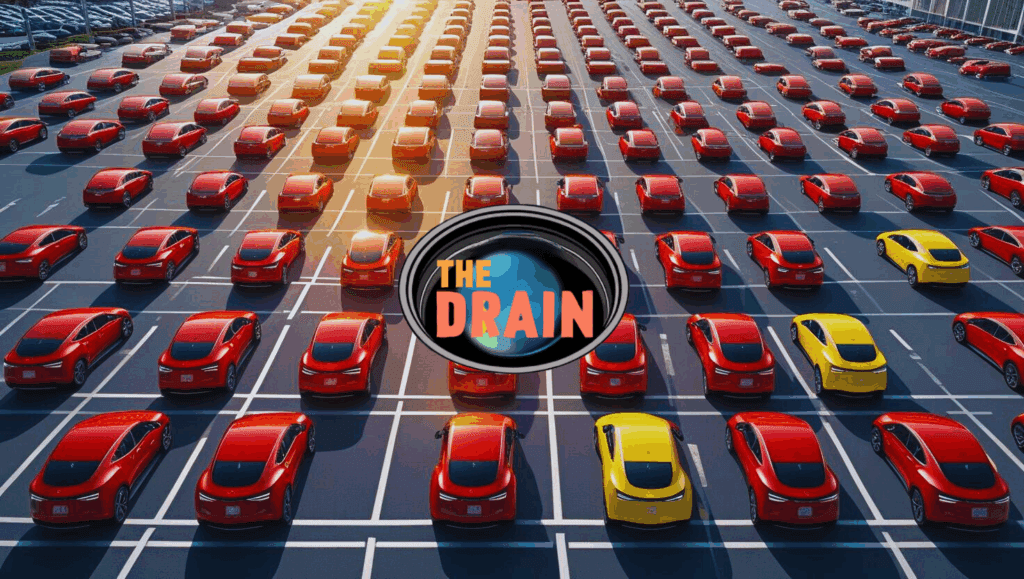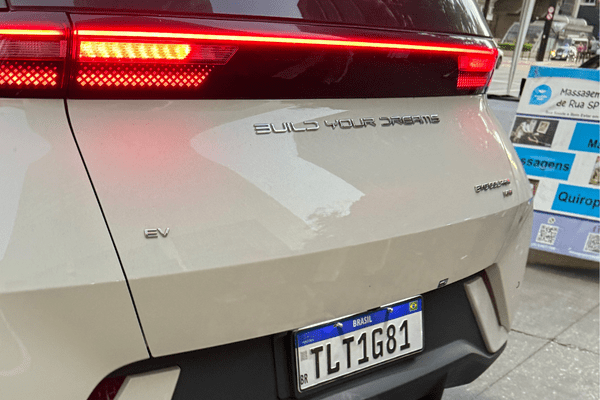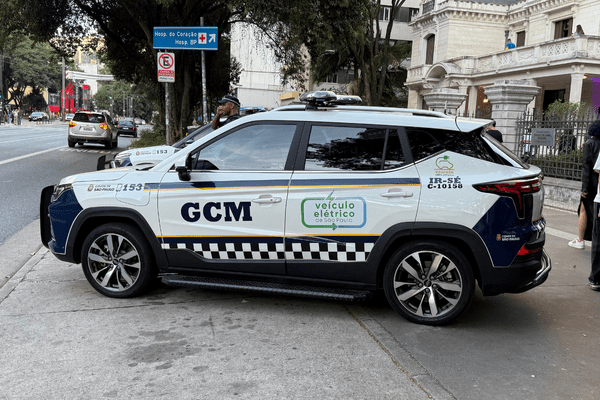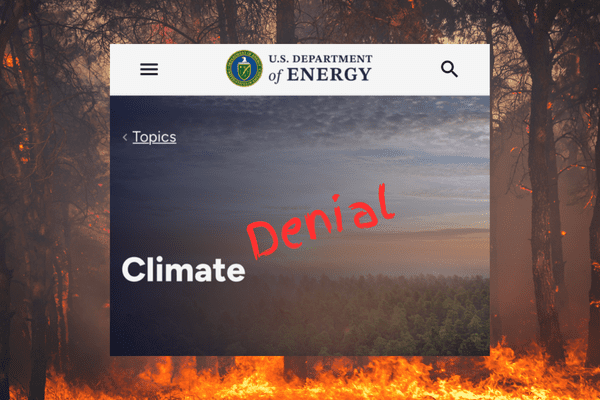China is Kicking Our Ass at Our Own Game
The Drain is a weekly roundup of environmental and climate news from Legal Planet.

The first time I saw a Chinese-made EV on the road I was walking on a crowded sidewalk in São Paulo. It was a Saturday night this May, when the whole city seemed to be out enjoying the warm weather. A street rave took over an entire block so to keep moving, we pedestrians had to squeeze past street vendors and weave through cars that were idling in driveways. That’s why I was close enough to the car’s bumper that I could make out the “Build Your Dreams” logo on the back of the car. After that first BYD sighting out in the wild, I started seeing them all over during my visit to Brazil.
Chinese automakers have seized on Brazil, the world’s sixth largest car market, as a springboard to all of Latin America. BYD and two other Chinese firms, Great Wall Motor and Chery, are starting to operate factories there, Somini Sengupta reported last month in the New York Times. So, while there are already a lot of Chinese EVs on Brazil’s roads, many more are coming as those factories get up and running.
“What you saw in Brazil is the leading edge of a strategy that started years ago,” my UCLA Law colleague Alex L. Wang, who studies Chinese environmental governance, told me in an interview. “It’s part of this broader Chinese push to get into clean tech and upgrade their economy.” What started two decades ago as a mostly domestic industrial policy to help shore up energy security and alleviate severe air pollution is now also an export strategy, Wang said, noting that BYD recently surpassed Tesla to become the largest EV manufacturer in the world.

Teslas are a dime a dozen in California, of course. We’re the state with the highest uptake of EVs. But like most Americans, I’d never seen a BYD vehicle in person because they’re essentially banned from being sold in the US. Come to think of it, I saw another “first” on the streets of São Paulo: an electric police car.
Latin America is the next frontier for Chinese EVs, after Europe and Asia. The number of vehicles imported to Brazil from China tripled between 2023 and 2024, NYT’s Sengupta reports. As a result, some accused China of flooding the market and Brazil responded by ratcheting up import duties and sought to encourage more auto production inside the country.
So now what we see is Chinese manufacturers setting up shop inside Brazil to try to bring down tensions. After all, relations with countries like Brazil, Chile, and Argentina are important to China for other reasons, most notably the supply chain of critical minerals, Wang said.

“That reflects a goal that all Global South countries say that they want. If they are a supplier of minerals, especially, they’ll say, look, we don’t want to just be a supplier of raw materials commodities. We want to move up the value chain. So this is an example of China trying to accommodate that and responding to local pressures,” Wang said. “I was just reading an article in the Chinese press which was oriented at Chinese automakers and saying, ‘Look, we need to play this game so that we can get into the market and dominate,’” Wang said. “So that’s the way, obviously, the companies are thinking about it.”
How are US companies thinking about it? They should be freaking out. They are starting to lose out on Latin America’s biggest economy with a population of 200 million people. A Ford plant that operated in Brazil for 20 years shuttered in 2021. It’s becoming a (you guessed it) BYD factory.
New numbers out today show that EVs represent 28% of global auto sales. That’s a big jump from last year at this time. That’s a big and growing market to be losing. China is leaving us in the dust.
Some are freaking out. Ford CEO Jim Farley, who recently visited China, called the rise of Chinese EV makers an “existential threat” to the U.S. auto industry. Michael Dunne, a former General Motors executive, wrote recently that “BYD now has such overwhelming advantages in costs and battery technologies that it could end up destroying its U.S. competitors, endangering a critical American industry and hundreds of thousands of jobs.” But who is doing anything about it? Carmax, Carvana, and other automotive stakeholders along with Plug In America pleaded with members of Congress to keep EV tax credits in the recent Republican tax measure. They did not.
And it’s not just cars. China now fully dominates the “new three” of solar, EVs, and lithium-ion batteries, which were all invented in the US, the Washington Post writes, but now are being won by the Chinese. “The Trump administration is surrendering to China right and left,” former Transportation Secretary Pete Buttigieg recently told NPR, when asked about China’s strategy on clean technology. “They recognize that this is a way to dominate the economy of the future.”
China is kicking our ass; at a game America basically invented. There’s no good reason to forfeit or live in the past.
Wang, who has a forthcoming book called “Chinese Global Environmentalism” due out in fall 2025, uses a Blockbuster Video analogy. “America is just doubling down on old technology,” he said. “We’re continuing to rent DVDs when the whole world has moved to streaming.”
Welcome to The Drain, a weekly roundup of environmental and climate news. And the past week has belonged to the Endangerment Finding …
Endangerment Finding Cont.

If EPA succeeds in reversing the all-important Endangerment Finding, it would “eviscerate the biggest regulatory tool the federal government has” to keep climate change in check, my colleague Ann Carlson told Grist. But there may be a silver lining of sorts. By ceding federal authority to regulate greenhouse gases, the Trump administration could unintentionally relinquish regulatory powers to California and other progressive states to carry out their own climate agenda, Carlson told the LA Times. “If I were the state of California and the endangerment finding gets rescinded, I would argue that there are no federal standards,” she told Heatmap News. Our colleague Mary Nichols echoed that sentiment to the SF Chronicle, saying “this leaves California much less subject to challenge if we say we want to regulate carbon emissions. They can’t preempt us from doing that.” And that could backfire on industry, E&E writes.
Congressional Democrats, including Sen. Sheldon Whitehouse, promised to fight EPA’s actions by encouraging legal challenges and expanded state climate efforts. The EPA will be taking public comments here on the proposal through September 15 and hold at least two public hearings on August 19 and 20.
E&E’s Scott Waldman and Chelsea Harvey have a thorough fact-check article on the right-wing attack on climate science and particularly the attacks by EPA on the endangerment finding, as well as a supporting report by the Energy Department, which claims to offer “a critical assessment of the conventional narrative on climate change.”
Molly Taft at Wired spoke to 9 different scientists whose work was cited in the DOE report downplaying the risks of climate change, and “all of them say their work was misrepresented, cherry picked, and/or lacked context.”
The report is a “scattershot collection of oft-debunked skeptic claims,” the NYT reports and “not representative of broader climate science research findings.” The DOE is taking public comment on its report through September 2.
Proving that a picture’s worth a thousand words, I submit an actual Energy Department social media post: a pinup photo of a lump of coal.

Good News
Renewable energy will overtake coal to become the world’s top source of electricity “by 2026 at the latest”, according to recent forecasts from the International Energy Agency, which I’ve mentioned here before. But just check out this graph from Carbon Brief
State officials in New York have approved a first-in-the nation all-electric, zero-emission building standard, taking direct aim at the Empire State’s largest source of climate pollution, Alison F. Takemura reports for Canary Media. It prohibits gas and other fossil fuels in most new buildings.
The Department of Defense reversed itself on hurricane data and said it no longer planned to shut down a program that makes satellite data publicly available to researchers and forecasters.
LA’s Bureau of Street Lighting is slowly swapping out traditional streetlights for solar-powered versions. Canary Media reports it’s a way to crack down on copper theft, because the new ones are not attached to the larger power system and thus have no copper wire to steal.
Bad News
Trump froze $200 million in UCLA science and medical research funding, citing alleged antisemitism. UCLA Chancellor Julio Frenk called the government’s action a loss for Americans who depend on the university’s life-saving research. The executive board of the UCLA Faculty Association prepared this open letter and is soliciting signatures widely.
The Trump administration is asking NASA employees to draw up plans to end at least two major CO2 satellite missions, NPR’s Rebecca Hersher reports. “If the plans are carried out, one of the missions would be permanently terminated, because the satellite would burn up in the atmosphere.”
The wildfire in Grand Canyon National Park that has been burning for almost a month is now the largest blaze so far this year in the continental U.S., scorching more than 114,000 acres as of this weekend.
COP30 and Greenwashing
PR giant Edelman was hired to help COP30 host-nation Brazil run its media strategy for this year’s UN climate conference – “even though it also works for Shell, one of the world’s biggest fossil fuel companies,” Matteo Civilinni reports for Climate Home News. “…the same executive overseeing the firm’s work with Shell in Brazil – where the energy company is ramping up oil and gas output – will also work on the COP30 contract.”
Don’t blame Brazil alone: the UN Development Programme ran the selection process on behalf of the COP30 presidency, and said the appointment “did not break its conflicts of interest policy.” Does UNDP not listen to UN chief António Guterres’ own speeches about the evils of fossil fuel advertising?
Wind farms
“Wind is a disaster,” Trump said last week during a presser at his Turnberry golf course in Scotland that brought his yearslong hate for wind full circle. The Guardian fact-checked his claims and found that he was really only correct about China being the biggest manufacturer.
Samuel L. Jackson has joined an entertaining video campaign by Swedish energy company Vattenfall AB to promote offshore wind farms, in the face of continued opposition and misinformation from Trump and some Republicans. “These giants are standing tall against fossil fuels — rising up out of the ocean like a middle finger to CO2,” Jackson says.
Los Angeles and California
LA and CA leaders are restricting the building of duplexes on single-family-home lots in the Palisades rebuilding efforts. Mayor Karen Bass issued an executive order restricting the development of duplexes in Pacific Palisades and Gov. Newsom issued an executive order allowing the Palisades and parts of Malibu and Altadena to restrict development in high severity burn areas. “No outcry has erupted over the addition of accessory dwelling units in the Palisades, even though they could bring similar increases in building, and have been far more common in permit applications,” Liam Dillon reports for LAT.
Oil and gas companies spent the most of any lobbying group in Sacramento in the second quarter of the year, according to financial filings submitted last week. Chevron spent $3.9 million and the Western States Petroleum Association spent $3 million, as lawmakers decided against proposals to hold oil and gas companies financially accountable for damages caused by climate change, Camille von Kaenel reports for Politico.
Much was made of Kamala Harris not running for California governor, but Politico’s California Climate, citing Ken Alex, focused on how the climate lane is still wide open for a candidate with most of the declared candidates talking jobs and prices.
Transportation Secretary Sean Duffy wrote a Sac Bee op ed to troll Gov. Newsom for having “no clue what functional government looks like… In fact, he’s suing to protect this multi-billion-dollar train to nowhere.”
In the second quarter of 2025, Californians purchased 100,671 zero-emission vehicles, representing 21.6% of all new vehicle sales in the state, the Energy Commission said. This marks a slight decrease in overall sales year-over-year compared to the second quarter of 2024.
Researchers at the California Water Institute at California State University, Fresno, wrote in the Fresno Bee about the need to take a regional approach to increase the capture and recharge of floodwater. “The goal is to optimize the use of floodwater for recharge that would otherwise flow out of the San Joaquin River watershed out to the Delta and the San Francisco Bay.”
FEMA, Disasters, and Extreme Weather
Kerrville residents testified at a special hearing state lawmakers called in Kerrville to hear from residents and local officials about the state and local response to the flooding in Central Texas that killed at least 130 people. Turns out two key emergency officials were literally asleep at the start of the flooding.
As of May 2025, 48% of Americans are at least “moderately worried” that their local area might be harmed by extreme heat, according to findings by Yale Program on Climate Change Communications. “Heatwaves consistently drive national interest in climate change, more so than wildfires or hurricanes.”
Extreme weather is killing local businesses. The Aspen Institute Financial Security Program recently published a report outlining the hurdles small businesses face from severe weather.
Energy and Abundance
The Interior Department released a new secretarial order on Friday saying it may no longer issue any permits to a solar or wind project on federal lands “unless the agency believes it will generate as much energy per acre as a coal, gas, or nuclear power plant,” reports Jael Holzman at Heatmap.
The Vatican is moving forward with a plan to turn a 1,000-acre field north of Rome into a vast solar farm that the AP reports could generate enough electricity to turn Vatican City into the world’s first carbon-neutral state.
Senior officials from the Biden-era Department of Energy loan office have launched a new nonprofit that will aim “to speed deployment of low-carbon tech in the U.S. and abroad,” Ben Geman reports for Axios.
Bill McKibben has an exploration of the permitting woes for rooftop solar in Mother Jones. He compares the US to Spain and Australia. “We need to figure out how to keep rooftop solar growing even without the federal tax credits,” he writes. “Doing that will require, among other things, unclogging the peculiarly American system of local permitting that has played a huge role in making “going solar” far more expensive than it needs to be.”
“The Abundance movement’s playbook — to streamline permitting, simplify government processes and make public investments more focused — falls short of what’s needed,” writes Arjun Krishnaswami at Utility Dive. “We won’t achieve energy abundance unless we contend with the powerful interests that benefit from scarcity.”
Other items worth your time
My UCLA Law colleague Jonathan Zasloff joined MSNBC’s Ali Velshi for a segment based on one of his Legal Planet columns, all about how “Donald Trump’s war on cities – and the things that keep them ticking – stands to hurt all of America, not just urban elites.”
The Sierra Club obtained the E.P.A. documents by filing a Freedom of Information Act request that show 15 coal-burning power plants, four steel mills, four chemical facilities and two mines wrote emails to the E.P.A. this spring to request pollution exemptions, according to documents reviewed by The New York Times.
At the Quitting Carbon newsletter, Justin Gerdes writes about the projects, people, and policies advancing the energy transition — and that includes himself. “As of June 24, when a technician from Pacific Gas and Electric (PG&E) shut off the fossil gas supply to my home, I now live in an all-electric home,” Gerdes writes.
A new 4-part miniseries called “Carbon Bros” from Drilled Media explores the rich intersection of gender and environmental issues, or as Amy Westervelt puts it “the longstanding and ever-increasing overlap between male grievance culture and climate denial and delay.”






Reader Comments